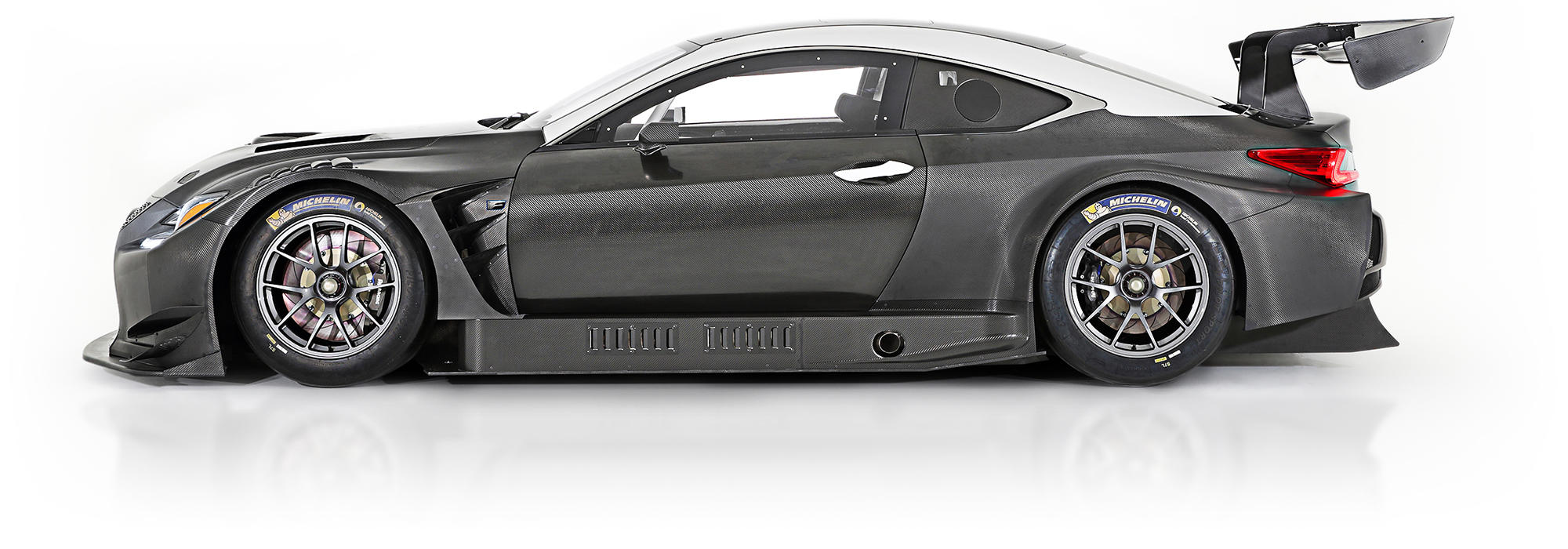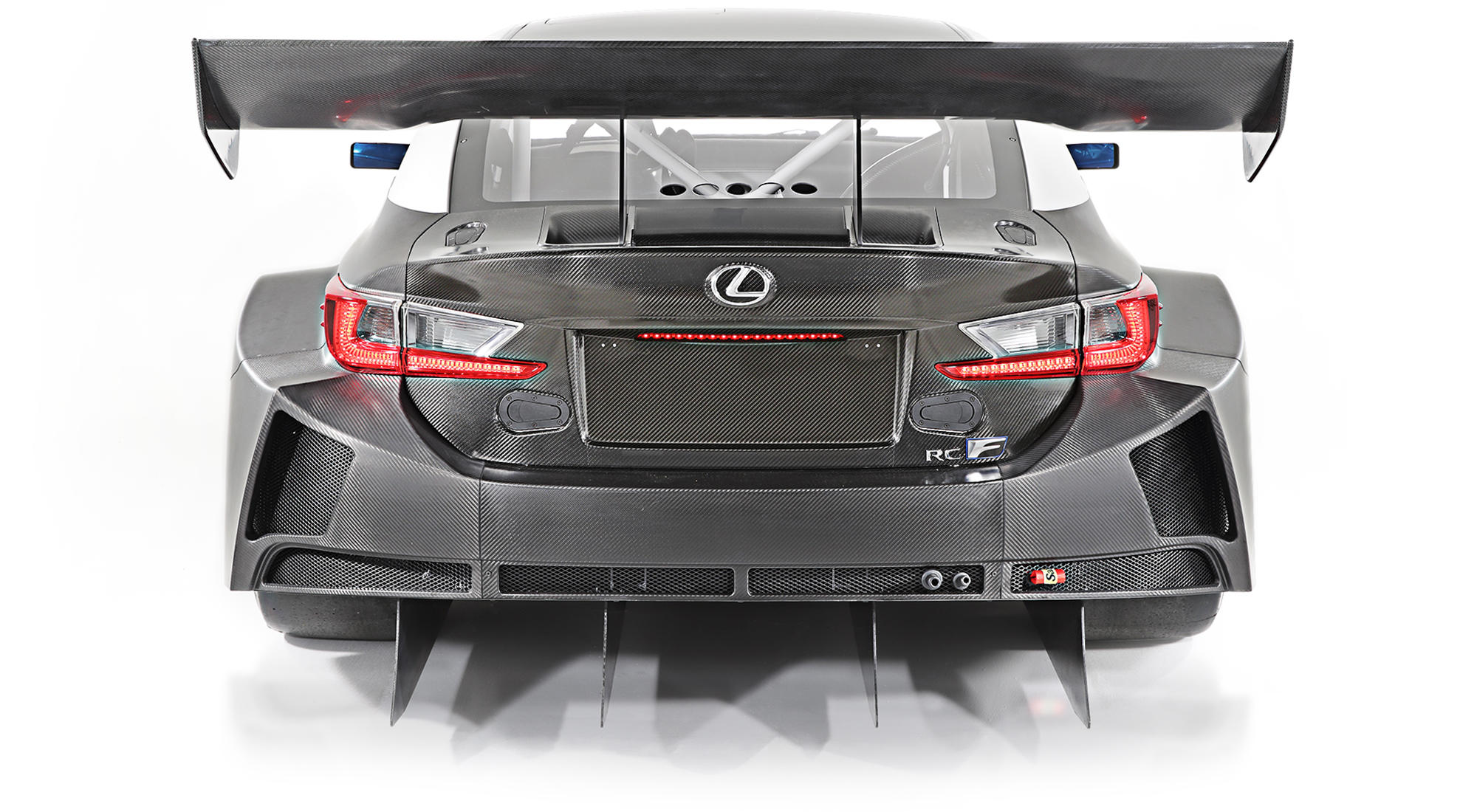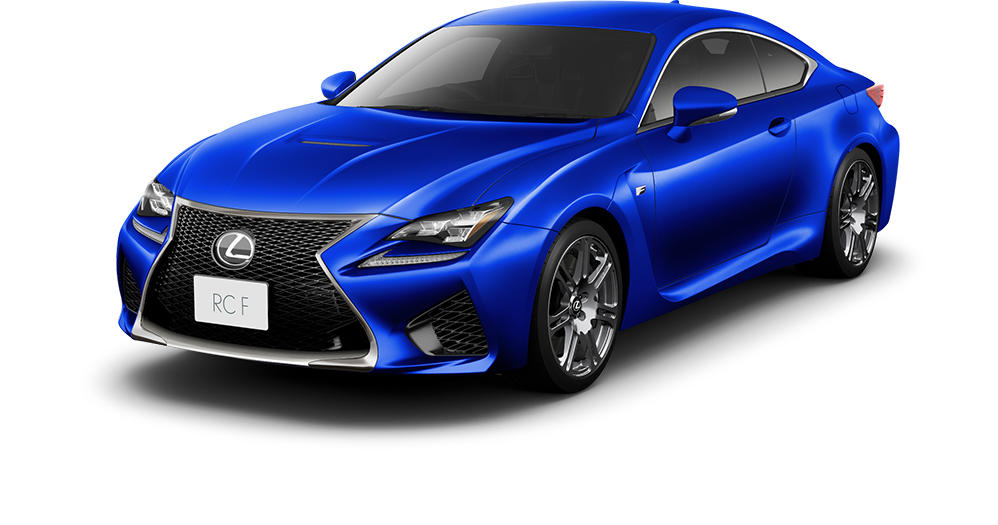CAR
About the GT3 Car
EXTERIOR

SIDE
The GT3 car is a race-specific car that is based on the commercial production model with regulations requiring the use of the monocoque of the production model and forbidding any changes in the layout of the engine mounting position, so LEXUS RC F GT3 is while also adopting the same front-mounted engine and rear-wheel drive layout. The reason that the portion from the A pillar to the C pillar is painted white is that it uses the same parts as the production model.
The rest of the bodywork uses carbon to reduce weight, and especially notable are the front and rear fenders with aerodynamic shapes added. In the production model, the exhaust from the engine extends to the rear of the car, but on the GT3 car it is extended to the sides.

FRONT
While retaining the spindle grill that symbolizes the LEXUS brand and the RC F bodylines, the front is modified in the image of a GT3 racecar. The curved aerodynamic parts on the left and right called "canards" are creating air vortices to the rear of the car in order to obtain necessary downforce. The engine has a dry sump lubrication system and is mounted considerably lower in the chassis than on the production model to increase running performance. The openings on the hood (bonnet) are designed to efficiently draw away air that was entered the engine room and thus increase cooling effect.

REAR
The rear end is designed to produce strong downforce. Notable features are the rear wing designed with technology gained from GT500 racecar development and the diffusers that churn up the air beneath the car. The vertical plates are called splitters and function the efficiently smooth out the airflow under the car and thus reduce drag. The press lines running from the rear fenders toward the bumper are conceived to improve aerodynamics. Also used on the front end, there are four elliptical bonnet pins employed for quick removal of the cowling, which is an important design feature for ease of serviceability in racing.
![]()
360° VIEW
※Drag the mouse to rotate the car image
COCKPIT

Unlike SUPER GT cars of the GT500 class that adopt all-carbon monocoques, the GT3 cars use the same monocoque as the base production model. This is the part of the chassis shown in white, and the safety-purposed roll cage designed from long development experience (shown as white pipes) ensures a high level of driver safety as well as car rigidity. The other parts shown are race-specific features, the seat designed for good driver protection, and the variety of switches that enable fine adjustments in performance that are all functionally arranged so that they are easily reached by the driver when wearing a seatbelt. Also, the rearview mirror is positioned specially for racecar functionality.
COMPARISON
In line with the philosophy behind the GT3 car regulations, the important thing is to make the best possible use of the individuality of the production model RC F, while giving the machine optimized performance as a racing car. Even though some performance adjustments will be made, a car design with a high level of basic performance potential can make racing performance better, so that the racecar can compete in the races with solid, stable performance. However, if the final racecar differs from the base production model too much, that is not compliant with the spirit of the GT3 regulation. We believe it can be said with confidence that this LEXUS RC F GT3 has cleared this difficult package of requirements at a very high level.
SPECIFICATIONS
CHASSIS & BODY
-
Base model name:
LEXUS RC F GT3
-
Body size:
4,846×2,030×1,271 mm (Overall length x overall width x overall height)
-
Car weight:
1300kg
-
Wheelbase:
2770mm
-
Transmission:
6-speed sequential transaxle (paddle shifting)
-
Drive layout:
2WD
-
Passengers:
One
ENGINE
-
Engine:
V8
-
Displacement:
5400cc
-
Output:
Over 500ps
CONCEPT
Development Concept
In 2014, the LEXUS RC F was released as a high-performance coupe. At the same time the RC F was being developed, an R&D project to build an RC F GT3 car was begun.At the time, luxury brand manufactures around the world were already producing GT3 cars, and LEXUS was in need of a car that symbolized state-of-the art road performance. Then, for a period of two years beginning in 2015, test participation was conducted in the SUPER GT series GT300 class races and also in GT races in Europe.
Joining the RC F GT3 project as development drivers were two SUPER GT champions and leading Japanese race drivers, Akira Iida and Yuji Tachikawa. In this project, Iida, who also evaluates production models, focused on the ideal of "a race car that amateurs also drive," while the active race driver Tachikawa, who still competes yearly for the GT500 class title, drove the development car with an emphasis on "a race car that is easy-to-use but still very fast." Heading the development team was TRD engineer Kazuki Yuasa, who has long been involved in the development of SUPER GT racecars (from the days of the predecessor All-Japan GT Championship). Yuasa and the other members of the TRD development team placed importance on the easy-to-drive character and identity of the production RC F, while going on to achieve dramatic reduction in machine weight and boosting performance potential at the same time. The result was a car that could compete on equal footing with the existing GT3 racecars of the rival manufactures.


